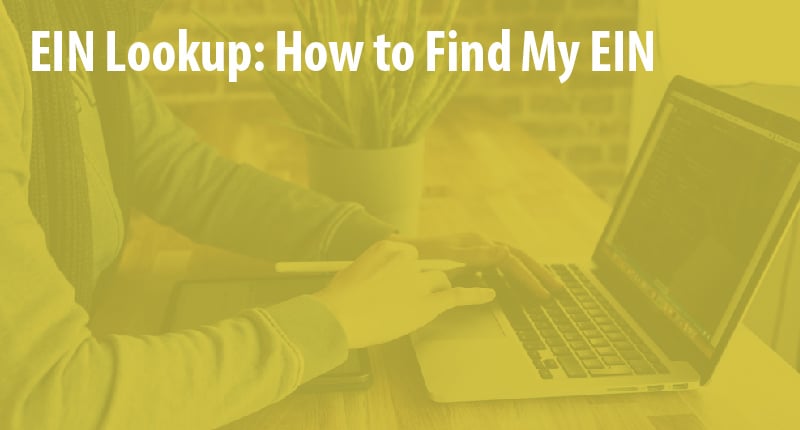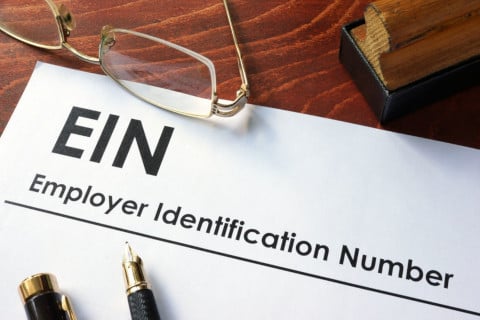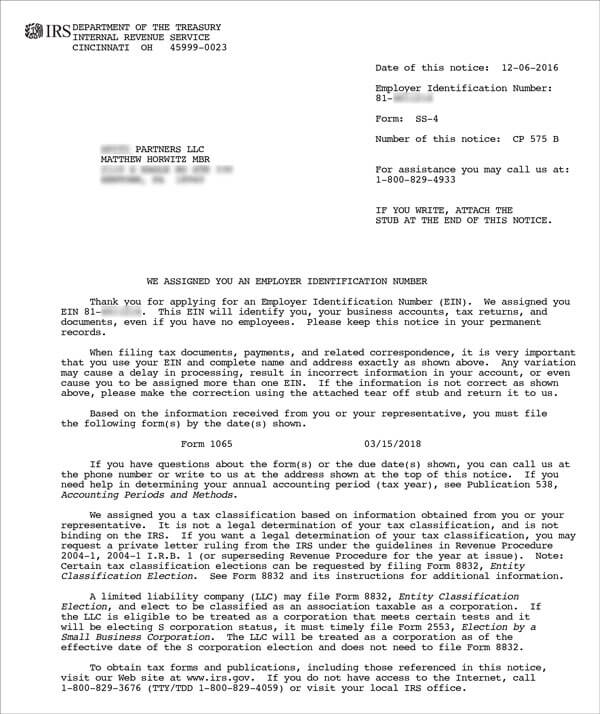What is an EIN and Why is it Important?
An Employer Identification Number (EIN) is a unique nine-digit number assigned to a business or organization by the Internal Revenue Service (IRS) for tax purposes. It serves as a identifier for the company, similar to how a Social Security number identifies an individual. The EIN is crucial for businesses and individuals to have one, as it is required for various purposes such as opening a business bank account, filing taxes, and hiring employees.
The EIN plays a vital role in maintaining transparency and accountability in business transactions. It helps the IRS track a company’s tax obligations, including income tax, employment tax, and excise tax. Additionally, an EIN is required for businesses to obtain credit, secure loans, and establish relationships with vendors and suppliers.
Having an EIN also helps to establish a company’s credibility and legitimacy. It demonstrates that the business is registered with the IRS and is committed to complying with tax laws and regulations. This, in turn, can enhance the company’s reputation and build trust with customers, partners, and stakeholders.
Furthermore, an EIN is necessary for businesses to comply with various federal and state regulations. For instance, companies with employees must obtain an EIN to file employment tax returns and report employee wages. Similarly, businesses that operate in certain industries, such as healthcare or finance, may require an EIN to comply with industry-specific regulations.
In summary, an EIN is a critical component of a company’s identity and is essential for tax compliance, transparency, and accountability. It is a unique identifier that helps the IRS track a company’s tax obligations and is required for various business purposes. As such, it is essential for businesses and individuals to obtain an EIN and maintain accurate records to ensure compliance with tax laws and regulations.
Methods for Finding a Company’s EIN
There are several ways to find a company’s EIN, depending on the information available and the level of access. One of the most straightforward methods is to search the company’s website for their EIN. Many companies publicly display their EIN on their website, often in the footer or on the “About Us” page.
Another method is to contact the company directly and ask for their EIN. This can be done by phone, email, or mail. Companies are generally required to provide their EIN to vendors, suppliers, and other business partners, so they may be willing to share it with you.
Online databases are also a valuable resource for finding a company’s EIN. The IRS website, for example, allows you to search for a company’s EIN using their name or address. You can also use business directories, such as the Secretary of State’s website or the Better Business Bureau, to find a company’s EIN.
In addition to these methods, you can also try searching for a company’s EIN on public records websites, such as the Securities and Exchange Commission (SEC) website or the Federal Trade Commission (FTC) website. These websites often provide access to company filings and other public records that may include the company’s EIN.
It’s worth noting that some companies may not publicly display their EIN, or may require you to provide certain information or credentials before sharing it with you. In these cases, you may need to use alternative methods, such as contacting the company’s accounting or finance department, or using a third-party service that specializes in providing EIN information.
Regardless of the method you choose, it’s essential to verify the accuracy of the EIN information you obtain. This can be done by cross-checking the EIN with other public records or by contacting the company directly to confirm their EIN.
Publicly Available Sources for EIN Lookup
There are several publicly available sources where EINs can be found, making it easier to locate a company’s EIN. One of the most reliable sources is the Securities and Exchange Commission (SEC) website. The SEC website provides access to company filings, including annual reports and registration statements, which often include the company’s EIN.
Business registration databases are another valuable resource for finding a company’s EIN. These databases, such as the Secretary of State’s website or the Business Entity Search database, provide access to company registration information, including the company’s EIN.
Non-profit organization directories, such as GuideStar or the Foundation Center, also provide access to EIN information for non-profit organizations. These directories often include detailed information about non-profit organizations, including their EIN, mission statement, and financial information.
In addition to these sources, the IRS website also provides a searchable database of EINs. The IRS website allows users to search for a company’s EIN by name, address, or other identifying information.
Other publicly available sources for EIN lookup include business directories, such as Dun & Bradstreet or Hoovers, which provide access to company information, including EINs. These directories often require a subscription or registration to access the information.
It’s worth noting that while these sources can provide valuable information, they may not always be up-to-date or accurate. Therefore, it’s essential to verify the EIN information obtained from these sources with other reliable sources to ensure accuracy.
Using the IRS Website to Find an EIN
The IRS website provides a convenient and reliable way to search for a company’s EIN. To use the IRS website to find an EIN, follow these step-by-step instructions:
Step 1: Go to the IRS website at www.irs.gov and click on the “Businesses” tab.
Step 2: Click on the “Employer Identification Number (EIN)” link and then select “Search for an EIN” from the drop-down menu.
Step 3: Enter the company’s name and address in the search fields and click the “Search” button.
Step 4: Review the search results to find the company’s EIN. The EIN will be listed on the company’s profile page, along with other information such as the company’s name, address, and business type.
Step 5: Verify the EIN information by cross-checking it with other reliable sources, such as the company’s website or business registration documents.
It’s worth noting that the IRS website only provides EIN information for companies that have registered with the IRS and have an active EIN. If the company is not registered with the IRS or does not have an active EIN, the search results will not return any information.
In addition to searching for an EIN on the IRS website, you can also use the IRS’s Business and Specialty Tax Line to obtain an EIN over the phone. To do this, call the IRS at 1-800-829-4933 and follow the prompts to speak with a representative.
Remember to always verify the accuracy of the EIN information obtained from the IRS website or other sources to ensure that it is correct and up-to-date.
Alternative Methods for EIN Lookup
In addition to the methods mentioned earlier, there are alternative ways to find a company’s EIN. One such method is to use a business credit report. Business credit reports, such as those provided by Dun & Bradstreet or Experian, often include a company’s EIN as part of their credit profile.
Another alternative method is to contact the state’s business registration office. Each state has its own business registration office, which maintains records of all businesses registered in that state. These records often include the company’s EIN, and can be obtained by contacting the office directly.
Additionally, some companies may include their EIN on their business registration documents, such as their articles of incorporation or business license. These documents can often be obtained from the state’s business registration office or from the company itself.
It’s also worth noting that some companies may have a unique identifier other than an EIN, such as a Taxpayer Identification Number (TIN) or a Federal Tax ID Number. These identifiers can be used in place of an EIN in some cases, but it’s essential to verify the accuracy of the information before using it.
When using alternative methods to find a company’s EIN, it’s crucial to ensure that the information is accurate and up-to-date. This can be done by cross-checking the information with other reliable sources, such as the company’s website or business registration documents.
By using these alternative methods, you can increase your chances of finding a company’s EIN, even if it’s not publicly available or easily accessible.
Challenges and Limitations of EIN Lookup
While there are several ways to find a company’s EIN, there are also potential challenges and limitations to consider. One of the main challenges is that not all companies publicly display their EIN, making it difficult to find the information.
Additionally, some companies may have multiple EINs, which can make it confusing to determine which one is the correct one. This can be especially true for companies with multiple subsidiaries or divisions.
Another limitation is that EINs are not always easily accessible. For example, some companies may require a login or subscription to access their EIN information, while others may only provide EIN information to authorized personnel.
Furthermore, EINs can be difficult to verify, especially if the company has undergone a name change or merger. In these cases, it may be necessary to contact the company directly or use alternative methods to verify the EIN.
It’s also worth noting that some companies may not have an EIN at all. This can be the case for small businesses or sole proprietorships that do not require an EIN for tax purposes.
Despite these challenges and limitations, it’s still possible to find a company’s EIN with persistence and creativity. By using a combination of online databases, business directories, and alternative methods, you can increase your chances of finding the information you need.
It’s also important to remember that EIN lookup is not always a straightforward process. It may require some trial and error, as well as a willingness to think outside the box and try alternative methods.
Best Practices for EIN Lookup and Verification
When looking up and verifying a company’s EIN, there are several best practices to keep in mind. First, it’s essential to ensure that the information is accurate and up-to-date. This can be done by cross-checking the EIN with other reliable sources, such as the company’s website or business registration documents.
Another best practice is to use multiple sources to verify the EIN. This can help to ensure that the information is accurate and reduce the risk of errors. For example, you can use the IRS website, business directories, and alternative methods to verify the EIN.
It’s also important to be aware of common mistakes that can occur when looking up and verifying an EIN. For example, it’s easy to mistake a company’s EIN for their Taxpayer Identification Number (TIN) or Federal Tax ID Number. To avoid this mistake, make sure to verify the EIN with multiple sources and ensure that it is accurate.
In addition, it’s essential to keep in mind that EINs are not always publicly available. In some cases, companies may not publicly display their EIN, or it may be difficult to access. In these cases, it may be necessary to contact the company directly or use alternative methods to verify the EIN.
Finally, it’s crucial to maintain accurate records of the EIN lookup and verification process. This can help to ensure that the information is accurate and up-to-date, and can also provide a paper trail in case of any errors or discrepancies.
By following these best practices, you can ensure that the EIN lookup and verification process is accurate and reliable. This can help to build trust and confidence in business relationships, and can also help to ensure compliance with tax laws and regulations.
Conclusion: The Importance of Accurate EIN Information
In conclusion, having accurate EIN information is crucial for businesses and individuals to maintain transparency and accountability. An EIN is a unique identifier that is used to identify a company for tax purposes, and it plays a vital role in ensuring compliance with tax laws and regulations.
By following the methods and best practices outlined in this article, you can ensure that you have accurate EIN information and avoid common mistakes that can lead to errors and discrepancies.
Accurate EIN information is essential for building trust and confidence in business relationships, and it can also help to ensure compliance with tax laws and regulations. By taking the time to verify and validate EIN information, you can help to maintain transparency and accountability in your business dealings.
In today’s business environment, accuracy and attention to detail are more important than ever. By prioritizing accurate EIN information, you can help to ensure that your business is running smoothly and efficiently, and that you are in compliance with all relevant laws and regulations.
Remember, accurate EIN information is just the starting point. By following best practices and staying up-to-date with the latest developments in EIN lookup and verification, you can help to ensure that your business is well-positioned for success.




